




Her aim this year is to listen.
“You never come in as a president to an institution like this and say, ‘This is what I’m going to do.’ The community tells you what’s needed.”
Elizabeth “Betsy” R. Cantwell sat down in her office as Utah State’s 17th president on Aug. 1. Although typically a slow process, Cantwell’s onboarding happened quickly, taking only four weeks beginning to end.
“I really wanted to start before the academic year started, so I could at least know how to get to work and where to park so I didn’t look like a complete idiot,” she said. “It was really fast, and I just had to take a deep breath and wade in.”
Cantwell recognizes she is new, so in order to best serve the university, she will be implementing listening sessions for students and faculty to participate in.
Listening sessions will ask three key questions: Where do you think we should be going in the future? What are you worried about that might stop our forward motion? What do you think President Cantwell should know that no one has the courage to tell her?
“There’s some really serious stuff going on, but there’s also serious stuff going on in the lives of students” she said. “You’re in a change period that history has rarely seen, and you guys are going to be the ones that are the next generation of leaders, so it did look to me like being a president was the highest level of service in higher education.”
Cantwell has a long and varied history and has worn many hats. She has worked for NASA. She has worked in national defense. She is now continuing her journey within higher education.
“When my fourth kid was doing college interviews, it really began to look to me like the mission of higher education was more important — probably the most important mission in the U.S.,” she said. “So I moved into higher education, and I’ve been very fortunate. I’ve worked at two very different but incredible universities, and I’m more and more convinced about this.”
Moving to Logan from Tucson, Arizona, Cantwell has worked at the University of Arizona and Arizona State University.
While originally from Boston, she has spent significant time all over the country. She attended high school in the heart of New York City and received a bachelor’s degree in psychology from the University of Chicago. She then moved to California, “because that is what everyone wanted to do in those days,” to work and rethink her life before receiving a second bachelor’s degree in engineering.
Cantwell wants to hear students’ voices and opinions as she familiarizes herself with her role as the leader of the university. She also wants students to take matters into their own hands.
“It’s not just administration or faculty that are in charge of making you safe,” she said. “You have some
say and control, as students, as well in looking out for each other in a very functional way — not just your friends or people you like, but people walking down the street. It’s really imbuing this culture of responsibility for the people on either side of you, whoever they are.”
Cantwell spoke on the mental health of students and her role in providing resources to those who are struggling. Her goal is to help students recognize their own resilience and come to terms with the fact that life is anxietyinducing, but there are still moments of joy and satisfaction.
Her advice is to find something simple every day to ground yourself to.
“I am really serious about this,” she said. “We live in an incredibly complicated world. It is not getting less complicated, it is getting more complicated. It is really a challenge for our brains to manage to train ourselves to find little pieces of joy everyday. Intentionally lean into it — just 30 seconds or 10 seconds makes all the neurological differences in the world. It can be so highly varied, but it’s about training your brain to have those moments as well. That’s a huge piece of surviving and thriving in the world where we live, where it’s pretty hard to take a deep breath and relax all that often.”
Cantwell said the majority of her job is to set the stage and answer the question, “Who are we?” on behalf of the university as a whole.
“I would really like to see this campus be able to become a place that is more comfortable and has a sense of belonging, associated with all of us feeling like we have authority to take care of one another,” she said.
Cantwell went on to explain that a look into infrastructure, how curriculum is delivered and how faculty understands whether students are well-equipped to get jobs upon graduation is necessary to the job.
“I think that as we have seen in the last ten years, in particular in higher education, bad things can happen on college campuses,” she said. “It’s my job to be as worried about that as I am focusing on the upside. I think we are in a pretty good place. I know there have been things to happen on this campus. I look at what we’ve put in place in the last couple years. That doesn’t mean we’ve done everything that we need to do, but I’m particularly interested in how we create a culture so when you come here, you become part of a larger team.”
Cantwell looks to the future and all that can be accomplished not only as a university, but also as a community.
“I don’t want to see a lot of mourning the past, because we don’t have time for that. We have to make the future good. We can’t let it do things to us, we have
to make it happen,” she said.
And with that, she struck a power pose for a photo, shook my hand and walked back to her office to complete her first day as USU’s 17th president.

Leah Call is a senior studying print journalism. When she is not furiously studying the AP Stylebook, she enjoys listening to the Velvet Underground and reading the wise words of Patti Smith in her beloved blue hammock.
— leah.call@usu.edu

The Utah State University Staff Employee Association, or SEA, held a meet-and-greet reception to celebrate the university’s new president, Elizabeth R. Cantwell, on Aug. 29. The reception was held at the David B. Haight Alumni House and was open to staff and student employees from all around campus.

Those in attendance could meet and speak with Cantwell, as well as ask her questions in a Q&A session.
that she asks of those she meets at USU in order to receive feedback on what she can do as the president.
“What do you think our greatest opportunities are?” Cantwell said. “What do you think are the things that have the highest likelihood of causing us real harm? And what do you think I need to hear about that you don’t think anyone else has the courage to tell me?”
One thing Cantwell continued to emphasize as she spoke was that universities are a unique type of organization that operate in ways different
to share yours with us and talk to us a little bit about how you see sustainability fitting into your presidential priorities.”
In response, Cantwell said as a university, it is important to be very complex and thoughtful on what actions will be taken because not every problem can be solved immediately.
“We have to have a policy that comes along with technical understanding that comes along with social and behavioral understanding,” Cantwell said. “And we’re just not there. That doesn’t mean we put our head down and disappear. But I do encourage at least one thing is that we think about where we’re going to partner so that our students get to participate in the act of partnering around the sustainability problem in the world, because that is huge.”
One student who asked a question during the session was Regan Tracy, the current Miss USU and a mechanical engineering student with an emphasis in aerospace. She asked Cantwell about a problem with the retention of female and minority students in STEM programs at USU and wanted to know if the president had any active plans or ideas for increasing retention of these students.
“I really liked her idea of trying new things and then seeing how it works,” Tracy said. “Particularly what she said about if it doesn’t work, it wasn’t a failure. We just decided, ‘OK, we just narrowed it down to what we can do to solve the problem,’ and so I’m very satisfied with her answer of looking to the future with hope.”
Tracy said she sees Cantwell as a powerhouse of a person and someone who has great leadership skills. She also loves that Cantwell is not afraid to tell it how it is and doesn’t sugarcoat anything.
Cantwell greeted people as they entered the venue, asking them their names and their position at the university.
Partway through the event, Alison Fabricius, the SEA president, introduced Cantwell to the crowd.
“I look forward to welcoming her at Utah State as I’ve watched her in various meetings and interacting with students at the Luminary and in different groups these last few weeks. I’m so excited about her enthusiasm, her passion and her excitement to be here,” Fabricius said.
Before taking questions, Cantwell spoke to the crowd and shared three questions
from other organizations. Because of this, university leaders have to think differently and do things differently than other organizations in order to make changes and improve.
During the Q&A, question topics included stipends for student leaders, housing for students and retaining qualified staff despite a depression in wages.
USU sustainability program manager Caitlin McLennan asked Cantwell about her thoughts on sustainability on campus.
“Sustainability is a huge concept,” McLennan said. “Everyone has their own definition, and I’m wondering if you’d like
“I will tell you, the role of the president is: You tell me, and I figure out whether or not I can actually do it, and then I do it,” Cantwell said.
Caitlin Keith is a senior studying print journalism. When she is not jaunting around in her bucket hat, she loves writing, eating goldfish and watching trash tv.
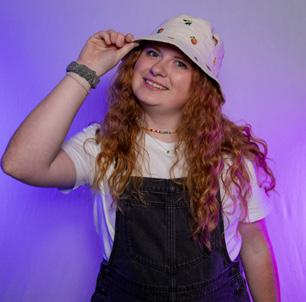
— c.keith@usu.edu

Students at Utah State University who regularly ride and take advantage of public transportation may have noticed the newest additions to the Aggie Shuttle fleet.
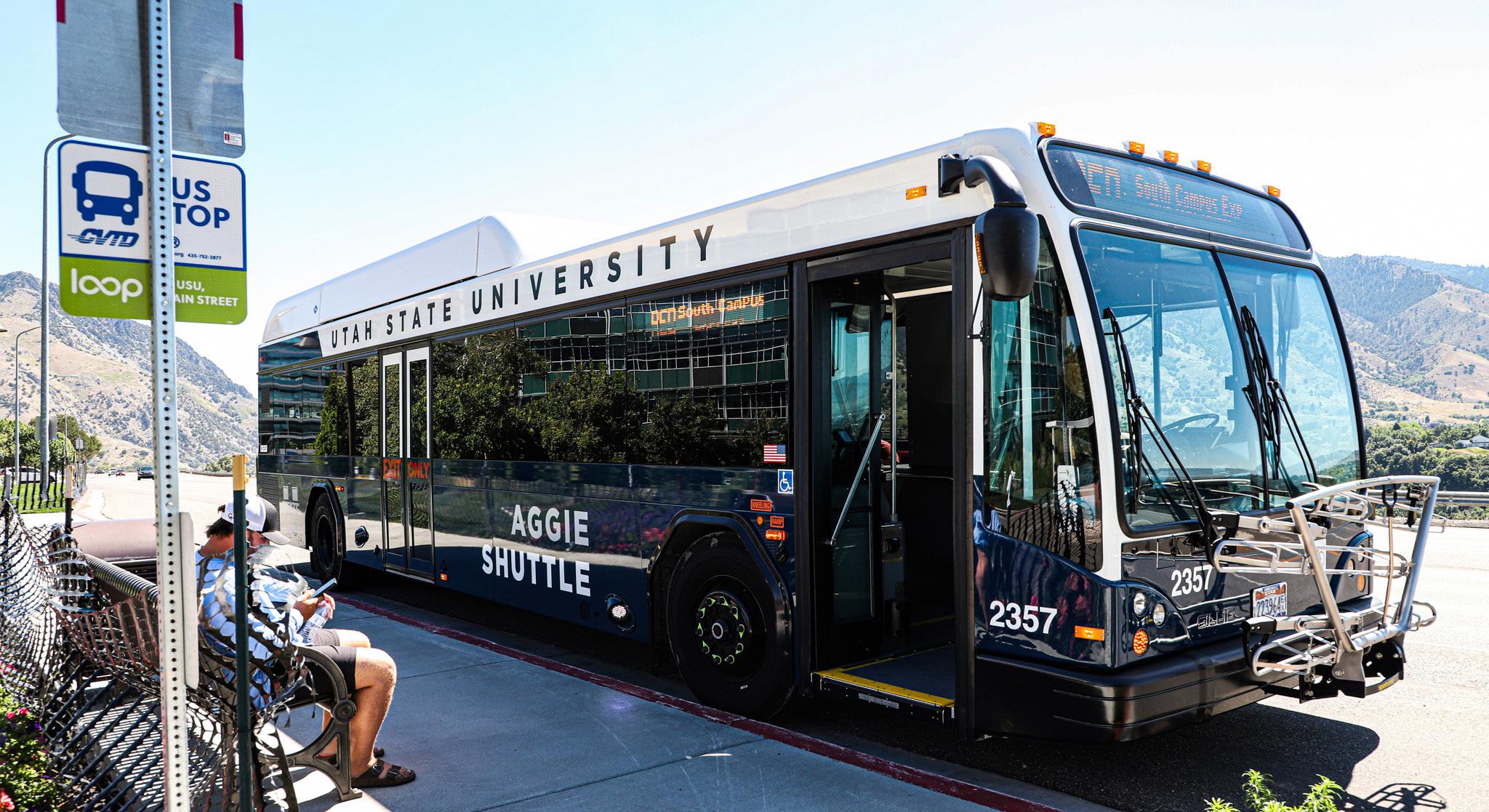
This year, USU Parking & Transportation welcomed two brand-new Gillick shuttles ready for students to use.
These new Aggie Shuttles are an improvement from the current shuttles in many ways.
“First and foremost, it will better serve our individuals who need passenger assistance,” said Dave Compton, the shuttle operations supervisor. “These buses will kneel, so it’s a shorter step to get on the vehicle. They also have a ramp rather than a wheelchair lift.”
The upgrade is the first of many to come.
“We’ve got a plan scheduled to replace two shuttles for the next two or three years in a row to try to update our fleet a little bit,” said Tracy Hulse, the Parking & Transportation director.
Parking & Transportation currently has 12 large shuttles. Some of these shuttles date back to 2014 and
experience mechanical issues.
“We did our due diligence in researching different makes and models,” Hulse said. “We are confident that there’s going to be a lot less mechanical issues.”
In addition to fewer mechanical errors, the new shuttle buses should last around 20-30 years, compared to the older shuttles that last around 10 years.
Each new bus costs $597,000 — a drastic change from 2018 when shuttles were $225,000 apiece.
“Yes, they were more expensive,” Hulse said. “But I really believe they’re going to be a better option and more comfortable for the students to ride.”
Parking & Transportation is an auxiliary with the university, meaning they do not receive any money from the university to operate; however, student fees are used to maintain the shuttles.
“We do receive student fees for the shuttle, and that’s the only money that we get from the university,” Hulse explained. “Those student fees strictly go towards the upkeep of those buses and the purchase of new ones. The money doesn’t go to salaries or anything like that.”
According to USU’s webpage, students pay $19.52 for the Aggie Shuttle in their student fees.
Last year, the shuttle’s total ridership was just shy of one million, with an average of 8,000 riders a day.
“We have 12 large shuttles and two mini buses,” Compton said. “Currently, we will have six day routes with the large buses and one day route with the minibus.”
In addition to last year’s routes, Parking & Transportation also added a Water Lab route that shuttles students to the mouth of Logan Canyon and near First Dam.
“We are always trying to improve our system and give our students the best bang for their buck,” Compton explained. “Our goal is to is to make our systems the most efficient in the state, and we’re working really hard to reach that goal.”
Alivia is a sophomore at Utah State University and loves everything journalism. When she’s not reading or writing Alivia enjoys food, family, and playing the guitar.
— alivia.hadfield@usu.edu
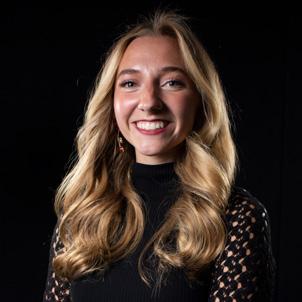
what a settlement value should be. She said each case is separately evaluated, taking into account a number of factors.
“Litigation presents a great deal of uncertainty,” DeRito wrote. “There are many direct and indirect costs for those involved, including requiring employees to divert their time and energy to responding to discovery requests and preparing for and participating in interviews and depositions instead of carrying out their normal operations.”
She said because of these costs involved, parties often compromise on a financial resolution.
“In doing so, the parties are not changing their position as to why they ended up in litigation; that is, they are not admitting fault or withdrawing their complaint. They are simply agreeing to resolve the matter and move forward,” DeRito wrote.
When a case is settled and an amount of money is agreed on, DeRito said settlements are paid through the State of Utah’s risk pool.
“The state risk pool is essentially Utah’s insurance pool,” DeRito wrote. “As a state entity, USU is covered by it.”
According to the Utah Division of Risk Management, all public institutions of higher educations, all state agencies, all public school districts and many public charter schools are insured through the state risk management fund.
Utah State Legislature Code Chapter 63A-4 says the state fund covers “property, liability, fidelity and other risks as determined by the risk manager in consultation with the executive director.”
Chapter 63A-4 states one way the risk management fund receives money is through appropriation by the legislature. Another is through any insured loss or loss expenses paid by insurance or reinsurance companies. These credits are deposited with the state treasurer. More information on the Risk Management Fund can be found at le.utah.gov.
“USU is always mindful that we are a steward of public funds and takes great care to prevent and resolve cases,” DeRito wrote.
By Savannah Burnard REPORTERIn the face of recent lawsuits against the school, Utah State University spokesperson Amanda DeRito explained where university settlements come from.
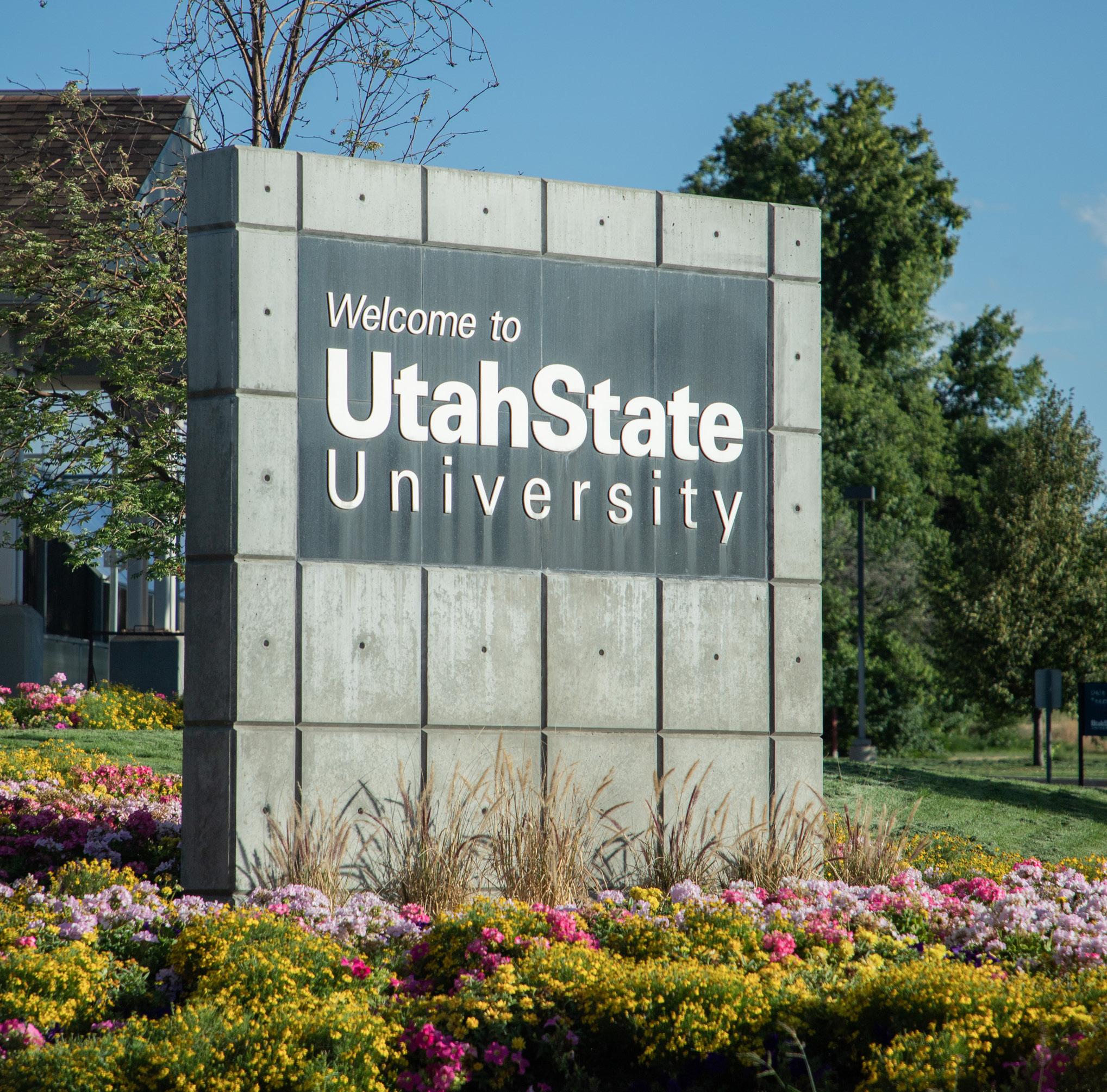
According to a settlement obtained by a Utah public records request, Patrick Maddox, a former USU football player, signed an agreement on July 12 with USU that said he would receive $150,000 by dismissing a lawsuit against the university and its head football coach Blake Anderson.
This settlement comes almost a year after the university signed another settlement agreement on Sep.
15, 2022 with Kaytriauna Flint, a former USU student. According to her settlement, also obtained by a Utah public records request, in exchange for Flint’s dismissal of her lawsuit against the university, she would receive a $500,000 payout.
With such high payouts, these settlement agreements might have some people wondering what standards determine the amount of money the university pays in settlement agreements and where the money comes from.
In email correspondence with The Utah Statesman, DeRito, USU’s associate vice president of strategic communications, said the university does not follow a set standard or rubric for deciding whether to settle or
Savannah
— savannah.burnard.usu.edu
As the fall semester begins, many involvement opportunities are happening for USU students on and off campus. Sophomore Joshua Davis has decided to organize his own event: a 5k with a portion of the proceeds going to the Stokes Nature Center.
“The Stokes Nature Center is a nonprofit whose mission is to provide nature education and outdoor exploration of our natural world,” Kendra Penry, executive director of the Stokes Nature Center, wrote in an email with The Utah Statesman. “We have been working in Cache Valley for 26 years because we believe nature is for everyone.”
Davis decided to organize a 5k because of his own dedication.
“I’m a super passionate runner myself,” Davis said. “I love the racing community. It just brings people together.”
The initiative Run Aspired, founded by Davis, is hosting the 5k on Sept. 30.
“The word ‘aspire’ just means to rise high or to tower, and that’s kind of the goal with this 5k,” Davis said.
When selecting a charity to donate to, Davis leaned toward local charities to help people feel like they were impacting their own community.
“The Stokes Nature Center is really helping people to recognize the greatness that the outdoors brings,” Davis said.
The center heavily focuses on educating people on how to preserve and restore nature.
“Our rising generations will have that education so that we can have the outdoors for future generations,” Davis said.
Penry said the center was happily surprised with Davis’ decision to choose them.
“We are thrilled to be part of the 5k and look forward to a really fun day,” she wrote.
The center’s mission of preserving and restoring the outdoors links to athletes, such as runners, who want to be able to continue doing what they love.
“They understand the importance of our mission,” Penry wrote.
Run Aspired’s 5k is open to everyone.
“I’ve been working to really just bring together the student community and then the local community,” Davis said. “I just want to see all those goals that people will be able to accomplish and that community that will be cheering them on along the way.”
Davis believes the event will be worthwhile even for those not participating in the 5k.
“We’ll have some raffle drawings there,” he said. “Personally, as a student, I’m always chasing after that free stuff.”
There are numerous ways for USU students to be involved with the center outside of the 5k.
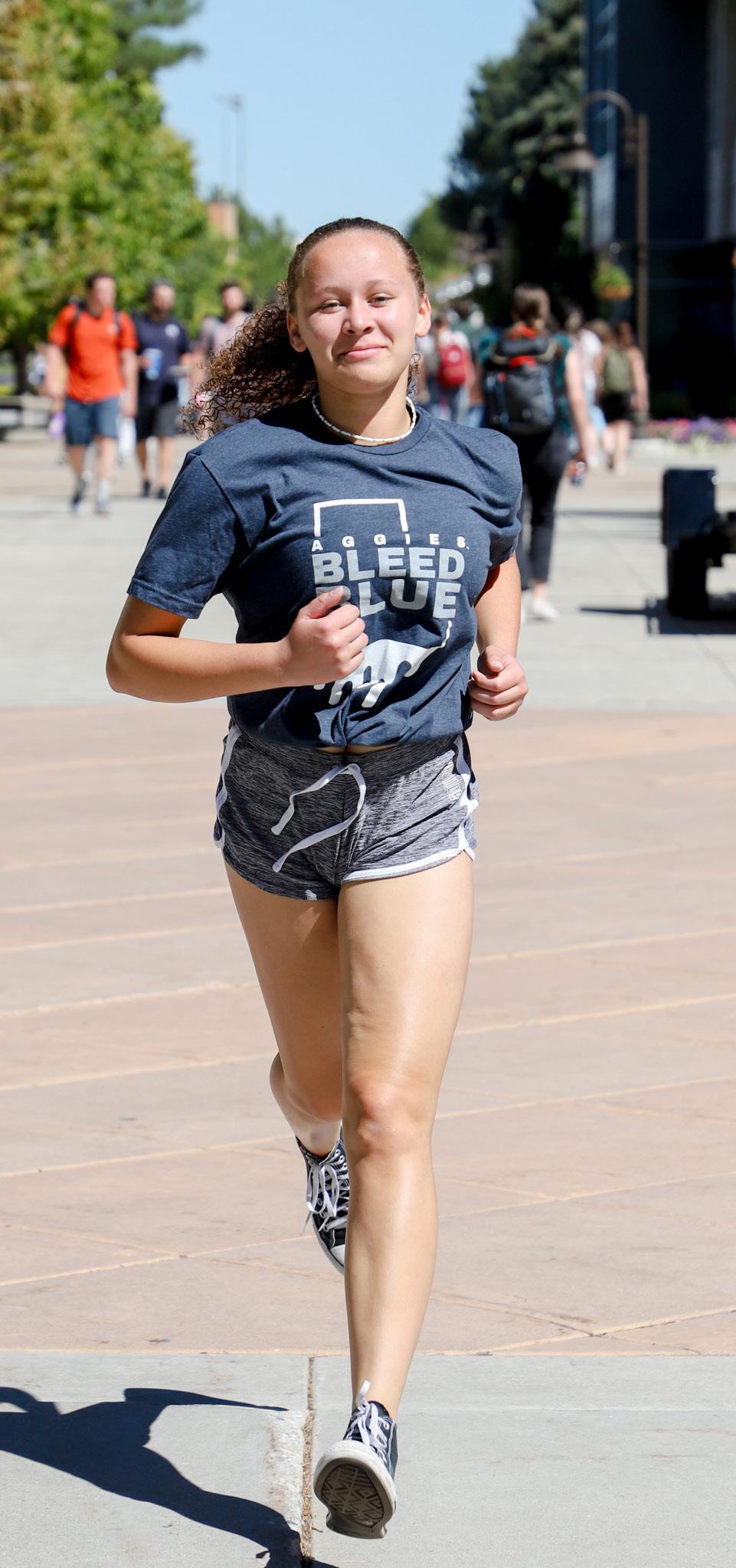
“Our nature center is staffed by volunteers which is a fun way to serve our community,” Penry wrote. They’re always looking for individuals who want to spend a couple hours and help people discover their love for nature.
“We have free programs as well as low cost events that all people are welcome to,” Penry wrote. “There are so many ways to get involved.”
As the event is nearing, Davis is looking forward to people’s enthusiasm toward the 5k.
“I’m just excited to see the community come together,” he said.
For more information on the Run Aspired 5k and registration, visit werunaspired.com.
To learn more about the Stokes Nature Center and how to get involved, visit logannature.org.
After teaching herself how to type at 5 years old, Ella decided that she wanted to be a writer. Now, she uses her writing to advocate for those who need a voice, specifically victims of child abuse. When she’s not writing, Ella is watching every 30-minute sitcom available and adoring her dogs.
— A02401436@usu.edu

When I was a kid, I was obsessed with the Disney Channel show “Phineas and Ferb.” I thought — and still think — the show was incredible and made a point to watch it every day. As a child captivated by romance, I lived for the love between two of the main characters, Phineas and Isabella.
However, no one would assume that this romance was pushing a sexual orientation onto me.
More people than ever feel comfortable identifying as part of the LGBTQ+ community and as society continues to progress, this number is likely to continue growing.
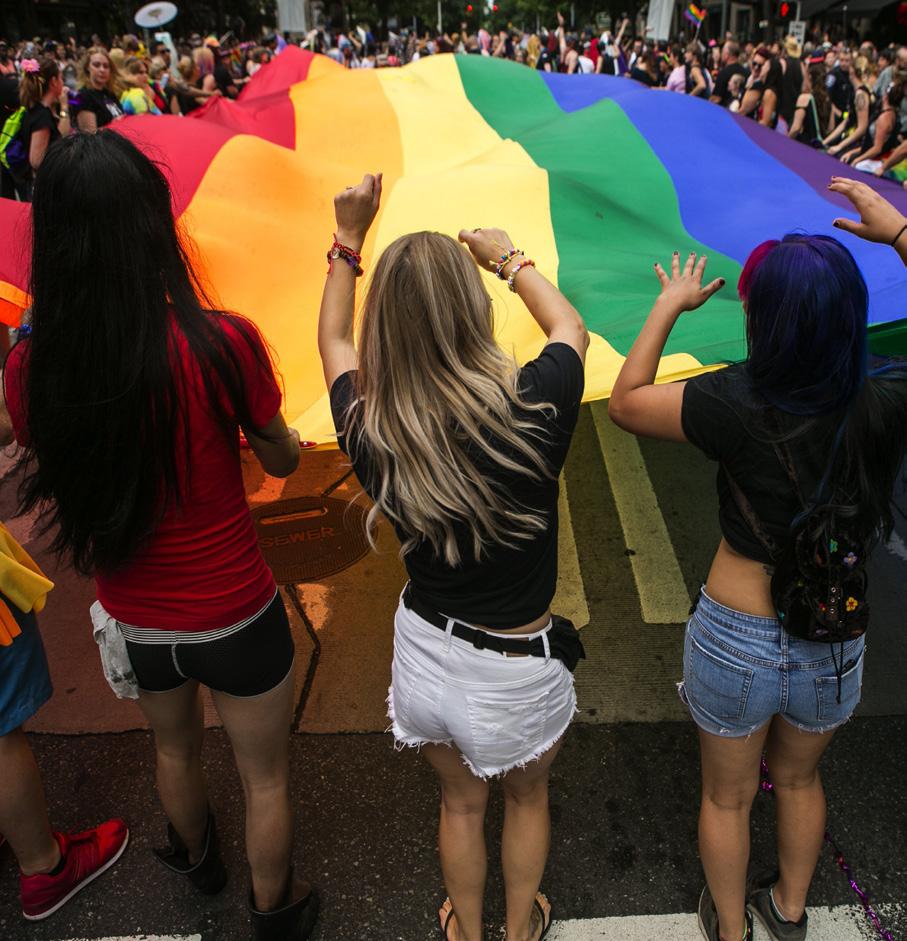
With an increase in people speaking out about identifying as queer, the media has also seen an increase in queer representation. Notable movies such as 20th Century Studios’ “Love, Simon” and shows such as Netflix’s “Heartstopper” have showcased queer lead characters to help more of the population feel represented. This representation has spread to kids’ media as well, but this seems to be where the biggest controversy lies. Disney shows like “Gravity Falls” and “Good Luck Charlie” were criticized for including same-sex couples as background characters. When rumors surfaced about Elsa from Disney’s “Frozen” being queer, there was pushback.
So, when Disney’s “The Owl House” featured the first canonically bisexual lead in a cartoon, people were angry.
A common argument against queer representation in kids’ media is that it’s enticing the kids watching to identify as queer as well.
In reality, sexual orientation is determined by brain chemistry and non-social environmental factors. In other words, the media and other people are both factors that do not contribute to sexual orientation.
Furthermore, the goal of queer representation in kids’ media is not to encourage kids to change their sexuality. Instead, the goal is to help more children feel seen and comfortable being themselves.
It’s no news that representation matters. People feel more comfortable with themselves when they see others like them, especially on a large scale. When people have others they can identify with, they feel less alone, lowering levels of depression and anxiety.
Kids’ media is no different, and a variety of representations in such is perhaps even more important. With kids still learning how to feel about themselves, understanding that there are other people like them can help counter feelings of loneliness and isolation.
On the flip side, kids who don’t identify as queer can learn from LGBTQ+ representation as well. As kids are still discovering their place in society, learning that there are people different from them encourages empathy and discourages prejudice.
At the end of the day, people feel more comfortable when they have things and people they can relate to. This isn’t different for kids. In fact, having this connection with other people, even if they are fictional, from a young age can help children as they move through life.
I’m not straight because I watched Phineas and Isabella kiss, just like my friend isn’t lesbian because she saw Luz and Amity hold hands in “The Owl House.” However, she does feel more seen, and I do feel more empathetic. Both of us feel better.
USU has been working to provide a more comfortable atmosphere for students who identify as LGBTQ+. The campus Inclusion Center works with queer healthcare providers to help students have access to important resources. There are also clubs such as the Queer Student Alliance and programs like Allies on Campus, as well as a LGBTQ+ support group that meets weekly. For more information or help, contact inclusion@usu.edu.
The Big Agg Show is a part of Weeks Of Welcome. It is a concert festival which showcases some of the amazing bands from Utah.

She’s Just a Friend



Cardinal Bloom
Not a Need Guava Tree
Neon Me Out
Sego

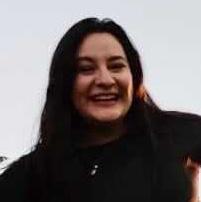




Cruise Control Sky Olson
Duluth

Raspberry Protocol


— A02401436@usu.edu


Chocolate Milk
Strawberry Jam
The USU Esports Club held their second-annual tournament during Festival on the Quad, and it was bigger and better than before.
What started as a fun, casual event has turned into a fan-favorite, spurring interest in the sport from students across campus. Last year, the club put on a Super Smash Bros. tournament. This year, Mario Kart 8 Deluxe was added, along with bigger prizes and more participants.
“Last year I didn’t do a lot of the esports stuff, and I wanted to get more involved, so I decided this was a perfect opportunity,” said Annie Houston, a second-year member of the club.

Some students joined the tournament reminiscing on childhood memories. Others wanted to prove their skills.
“My younger sister and I used to play all the time when we were kids, and I used to beat her. I felt really good about myself,” sophomore Cadence Rees said. “I’m not going to lie, I haven’t played in a few years, but we were like, ‘We might as well just go have some fun. Try it out.’”
Esports, short for electronic sports, is a form of competition using video games. The first esports event occurred in 1972 at Stanford University. Twenty-four students competed in the game “Spacewar” for the chance to win a year-long subscription to the Rolling Stone magazine.
In 1980, the first official video game tournament was held. The Space Invaders Championship held 10,000 participants and received widespread media attention. Today, tournaments are held around the world, offering prizes worth hundreds of thousands of dollars.
“Collegiate esports is definitely on the rise,” said Brandon Herrin, executive council member of the USU Esports Club. “In recent years, lots of big programs started to pick up in scholarships and players. Big tournaments are hosted both by private groups and game publishers.”
The Mountain West Conference has also held tournaments for participating colleges. Herrin said Boise State was one of the first big programs in the conference and has significantly expanded their group.
“Even as the industry as a whole has had some issues recently, collegiate esports has continued to grow pretty quickly,” he said. “We’re just trying to support it here at Utah State and grow it to the point where we can have a program like others, like football where players are spending hours every week, practicing and getting ready for competition.”
Sophomore Nathan Macintosh was drawn to the tournament because of the big screen on the Quad. He wasn’t playing in the tournament but enjoyed watching a fan-favorite game. He hasn’t always thought of esports on the same level as other collegiate sports, but he’s happy it’s growing at USU.
“If there’s any sort of competition to it, I feel like it could be a sport,” Macintosh said. “Probably most video
games are competitive in some way or another.”
According to their website, the club “exists to give USU students a place to enjoy video games in both casual and competitive environments. Esports is an emerging industry, and we hope to champion Utah State University’s support of the medium through competition and community.”
The club operates out of the Esports Center where teams have access to top-of-the-line PCs and peripherals from the Instructional Technology and Learning Sciences Department and Student Affairs/Campus Recreation. The ESC features lounge areas where students can take part in casual gaming activities, socialize, study or relax.
Annie Houston made it to the second round of the tournament. She has been in the club since last year and says Mario Kart is her favorite because it’s more luck-based than Smash Bros. She joined the club for the games and the friends.
“I like playing games, and it’s a good spot to meet
The club held its first open tournament at Festival on the Quad in 2022. The event is part of their effort to expand knowledge of the club across campus.
“Last year, it was a pretty big success. We’re trying to expand our offering and expand appeal to more people,” Herrin said. “We felt like these two games were the most common, especially Mario Kart. Everyone has played it at one point or another in their lives.”
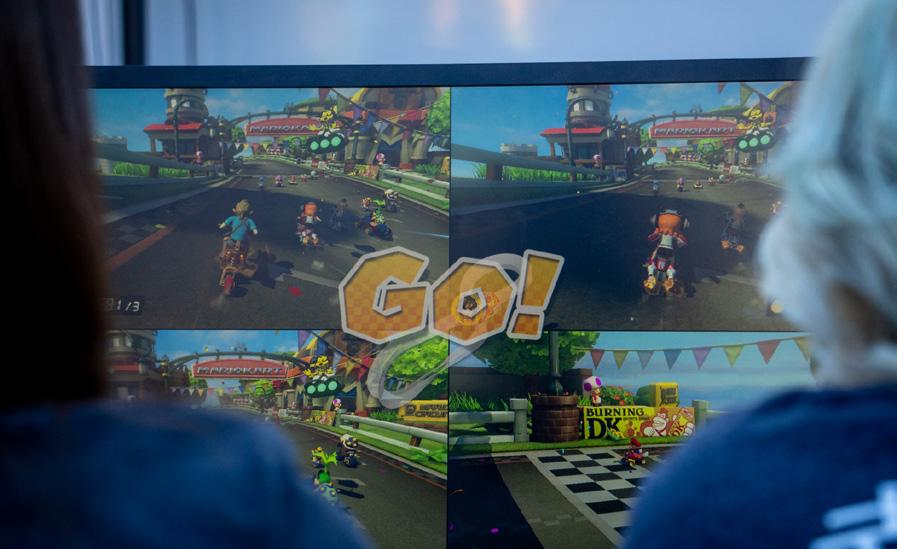
Sam Galati won the Mario Kart tournament after several rounds of races. Four people played against each other and the top two moved on to the next round. The final four raced on three different courses and Galati placed first every time.
“I’m pretty happy,” Galati said. “I like Mario Kart and I’m pretty good at it. I’ve been playing all growing up.”
The Teddy Buggy was his cart of choice throughout the tournament but his only strategy was to focus on doing good lines and use his own controller, the Nintendo Switch Pro.
Matthew Peters and Ashton Gee had a different approach to the Super Smash Bros competition.
“I like to play really aggressively. It doesn’t work well against, like, really good players but against more inexperienced players. You can kind of overwhelm them, and it gives me an advantage,” Peters said. “If it’s not working, I try to change the pace of the game a little bit and see what works best against that player.”
Gee said esports are all a mental game.
people who also like playing games. You can most likely find someone who likes the same game as you so you can talk about that,” Houston said. “It’s nice to go hang out, especially if you don’t have any online friends. You can go hang out with people and do multiplayer stuff.”
Herrin joined the club after and because of the COVID19 pandemic. When campus shut down and students were forced to stay in their apartments, he turned to gaming. He and his friends frequently spent time playing with and against each other. He found a new community of friends and decided to join one of the club’s competitive teams.
Leadership is involved in everyday activities of the club, organizing casual tournaments like Festival on the Quad and competitive teams as well. The club has several competitive teams across a variety of game titles, all of which compete in collegiate or private tournaments across the nation.
“Teams depend on if we have people who want to compete in those games. We are always on the lookout for new ones. We’re looking to field teams in fighting games this year, but in total, we have about 15 game titles that we compete in,” Herrin said.
Their most popular games with competing teams include Valorant, Overwatch 2, League of Legends,
“I evaluate how good they are based on some basic leading questions, such as ‘How long have you played this game?’ and ‘Who do you main?’ and then I pull a counter pick out of my back pocket, perfectly suited to that character’s weakness and the individual’s psyche in the moment of time. I study psychology for this game,” Gee said.
His competitive edge stems from his love for the game.
“I love Smash Bros. My sense of purpose comes from being better than people at this game and if I’m not winning, I’m lost.”
Whether playing for fun or seriously competing, the club wants all students to feel welcome. The ESC will be open Monday through Friday, 4 to 10 p.m. and Saturdays from 12:30 to 6:30 p.m. More information on joining the club can be found on the Campus Rec website.
“I mean, really, it’s just for us. It’s just been about trying to build a community. We’re here to give people a place to have fun, enjoy each other’s company and play some games,” Herrin said. “I encourage people to come hang out with us and have a good time. We’re just trying to have fun.”
The wind was howling Saturday night at Aggie RecFest. Thousands of students flocked to the rec center to participate in the annual event put on by Campus Recreation. Posted right by the entrance, donning brand new cream uniforms, was the Utah State Hockey Club.
They handed out over 1,500 copies of their 2023-24 schedule to students. Conversations could be heard between friend groups who had previously not known of a hockey team at Utah State and were now looking forward to attending the Sept. 30 season opener. The energy around the table that featured the massive Wasatch Cup was palpable and it was clear the Aggies were ready for a new season.
Last year's hockey team was electric. They finished the regular season with a record of 23-15, cruised through western regionals with wins over UCLA and Metropolitan State University-Denver and earned a trip to nationals. A 5-8 loss to Iowa, their third loss in as many games, would put an end to their nationals run.
The team that stood behind the Wasatch Cup in the ARC on Saturday aspires to be even better than last year's team.
“Last year's team was talented, but lacked some competitive edge when it mattered at the end of the season,” assistant coach Sam Lindquist wrote in an email to The Utah Statesman. “This year the returning players have the playoff experience that they know it takes at the national level.”
As the Aggies prepare for their 2023-24 campaign, the team will look a lot different.
“I think we have around 10 new guys, which is a lot,” senior forward Ben Carlson said.
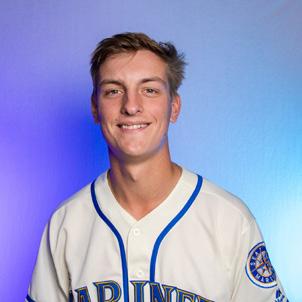
While the incoming talent is expected to shore up the roster soundly, it won’t be easy to replace last year's departures.
The biggest loss from last year is former captain Bradley Green. He was massive on the attack for the Aggies last year with a team-leading 17 goals. He was also top three on the team in points and assists.
[Green’s] “role as a goal scorer and our captain will be tough to replace, but we have plenty of studs who can score and a seasoned core group that can all serve as leaders,” said Carlson.
Returning for the Aggies are their top two points leaders from last season: forward duo Zach Pires and Sean Johnston. The two combined for 28 goals and 48 assists last year and will look to fill the goal-scoring shoes of their former captain.
Also returning is Carlson.
“Ben has been to the national tournament many times and tends to be an impact player late in games when it matters the most. He conducts himself with a contagious love for the game of hockey and many will follow his lead,” Lindquist wrote.
Perhaps the biggest change for the program is the hiring of head coach Rob Girard. His arrival in Logan comes at an opportune time, as the team believes he is exactly the kind of coach they need to build on last year's success.
“There were several candidates, and a handful of them were given serious consideration for the head coach position. Coach Girard has extensive coaching background and what really set him apart from other candidates was his proven leadership,” wrote Lindquist, who played a large role in the hiring decision. “This group of players needs a true leader to fuel them and that is what they'll get with Coach Girard. He will guide each player to their highest potential if the players themselves are ready to put in the work.”
The team has just recently gotten to know their new coach but is already fully on board with his philosophy. As a fifth year transfer from Montana State, Carlson has seen his fair share of coaches. But what he has seen from Girard so far goes beyond what happens on the rink.
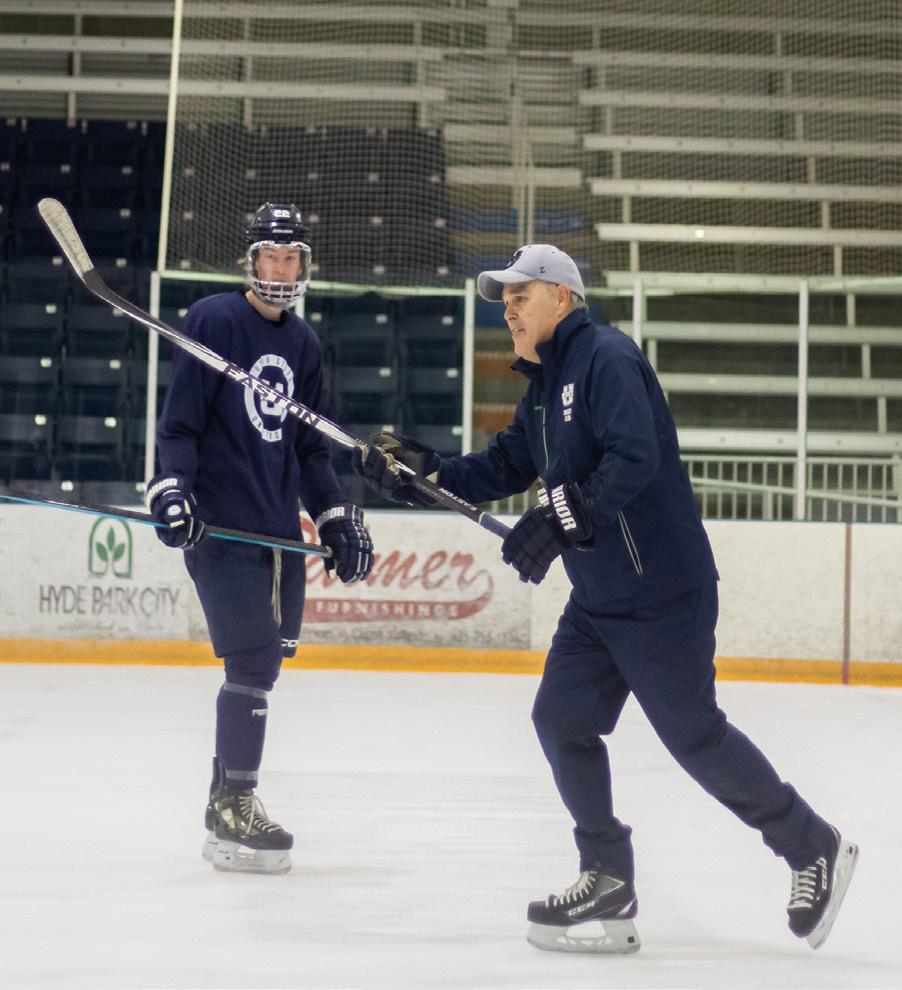
“Coach is looking out for us as students and as grown men,” Carlson said. “You can tell he is going to be a good mentor for us.”
Girard, a native of Toronto, Canada, describes his style of hockey as “fast, skilled, tough, but very disciplined.”
Girard has been around the game his whole life.
“I grew up in a hockey family where my father was a junior coach for many years when I was young. Hockey was a big part of our family life with most Saturday nights watching Hockey Night in Canada, like most Canadians,” he wrote in an email to the Statesman.
Prior to his hiring, Girard and his wife, Melissa, split their time between Fort Myers, Florida and Idaho Falls, Idaho. Their son, Josh, is a first year student at USU and was committed to playing hockey in Cache Valley well before his father took the head coaching position.
“I took the job for the challenge,” wrote Girard, who thought his coaching career had come to an end when he retired in 2021. “This is definitely the most talented group of players I have been able to coach, and it has always been a dream of mine to be able to coach at a College or University. To be able to coach at a program like Utah State is a once-in-a-lifetime opportunity and one that I don't take lightly. The goal for myself and the entire coaching staff is to move an already great program forward, which is a challenge.”
When asked about what he has seen so far in his time in Logan, Girard had high praise.
“What I have experienced so far is an incredible commitment to the Hockey Program from the coaches to the fans, the support staff and from the University,” wrote Girard.
Last year, hockey saw the third-highest home attendance behind football and basketball.
“Because of that, the entire team takes pride and knows the importance of putting a great team on the ice every season for the fans and the students,” Girard wrote.
For the Aggies, support from the community doesn’t go unnoticed.
“They helped us get to nationals last year, and they show up to all of our home games. We understand how lucky we are to have that, and we want to provide as much entertainment and as much fun for them as we can,” Carlson said. “When you’re coming down the ice on an odd-man rush and hear the roar of the crowd, it's exciting, man. There's a lot of energy that we gain from
them.”
Carlson said the Eccles Ice Center is “the best place to play club hockey in the country.”
He detailed a group of fans who showed up to watch tryouts.
“They even did the Scotsman when we were done,” he laughed. “That kind of passion is not really too common anywhere else”.
And for the Aggie faithful, there is a lot to look forward to.
“This team is really good,” Carlson said. “We had a great team last year, but we’re going to be a step up this year, and it's going to be rowdy.”
“Our goal is not only to win our division but the overarching main goal for this group is to get back to Nationals and compete for a National Championship,” Girard wrote. “But we will work on our process one day at a time and build every week.”
The Aggies open their season at home on Sept. 30. Tickets can be purchased at recportal.usu.edu. Fans can stay up to date by following them on Instagram @usu_hockey and visiting their website, usuhockey.com.
-hayden.gardner@usu.edu

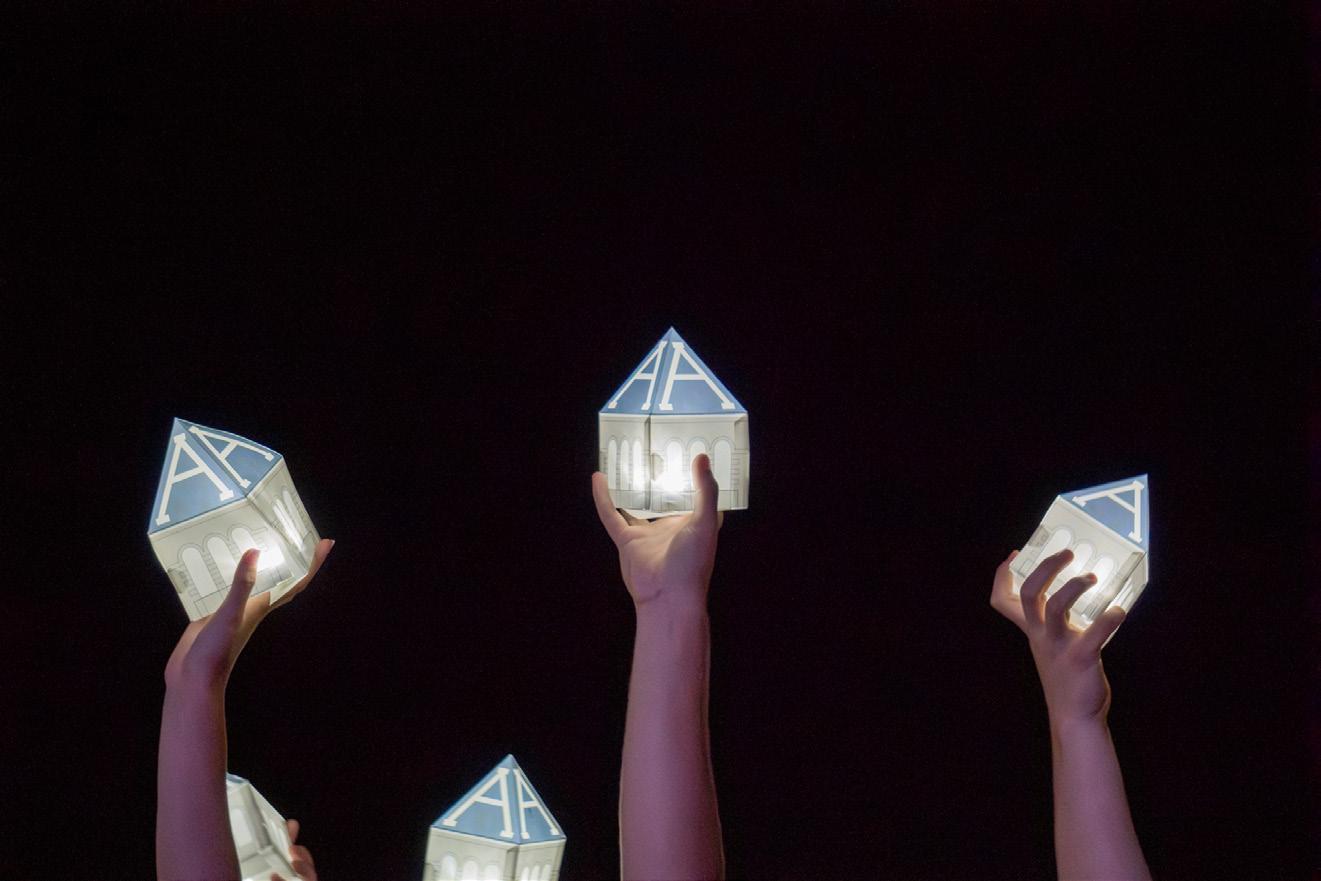



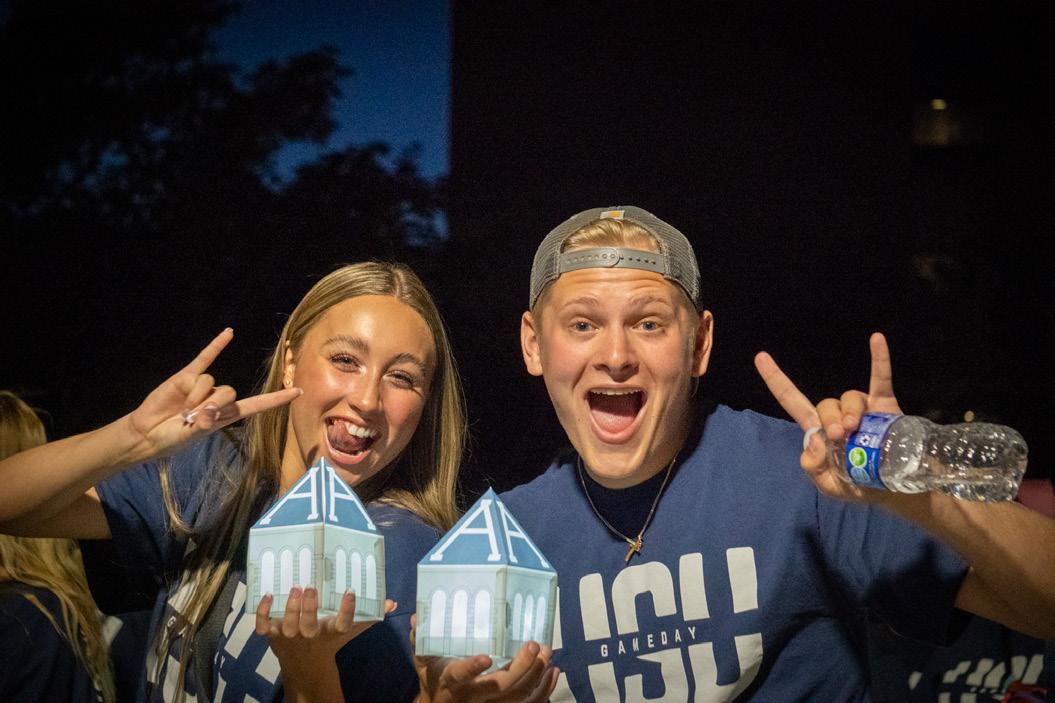
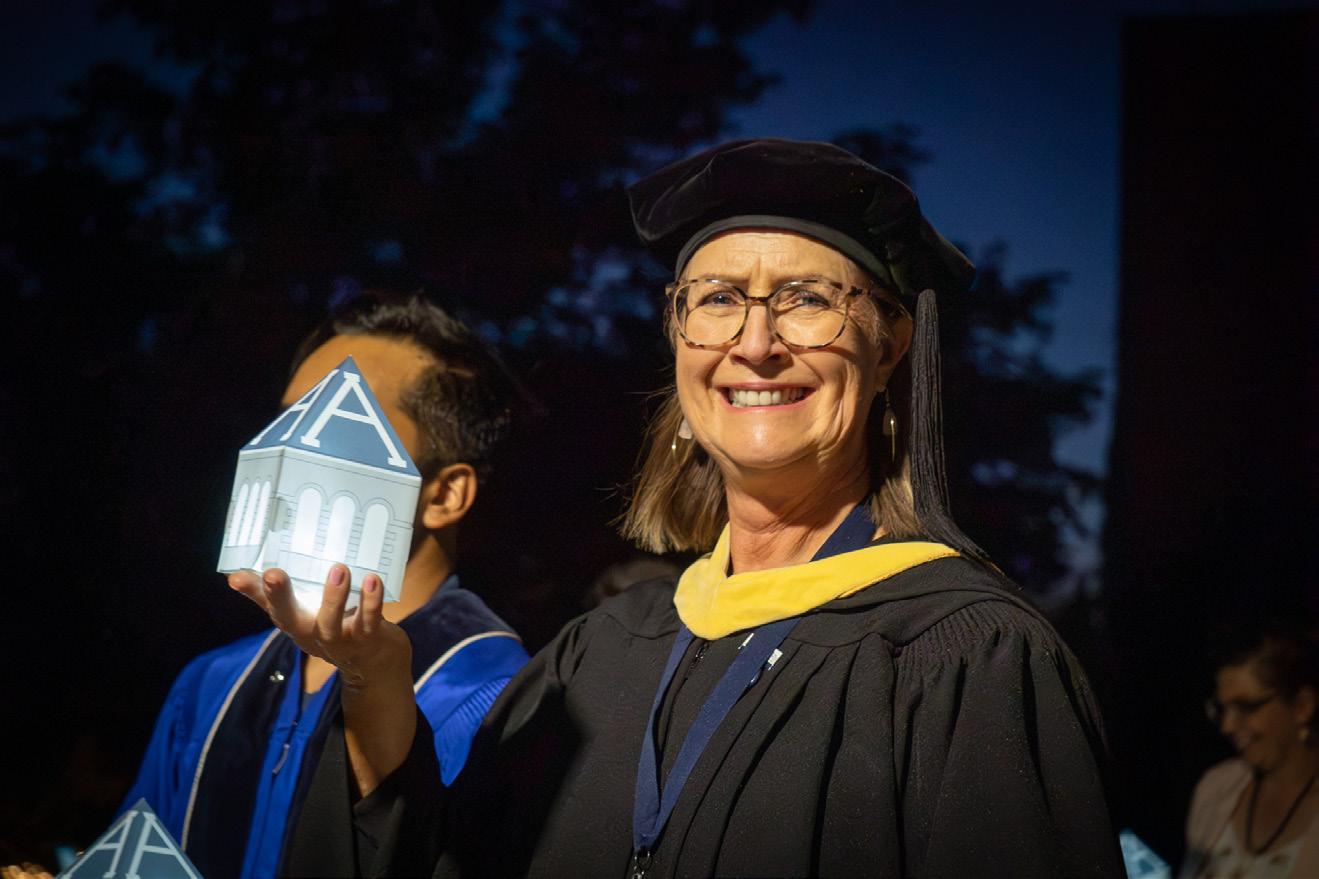


Last week’s solution:





